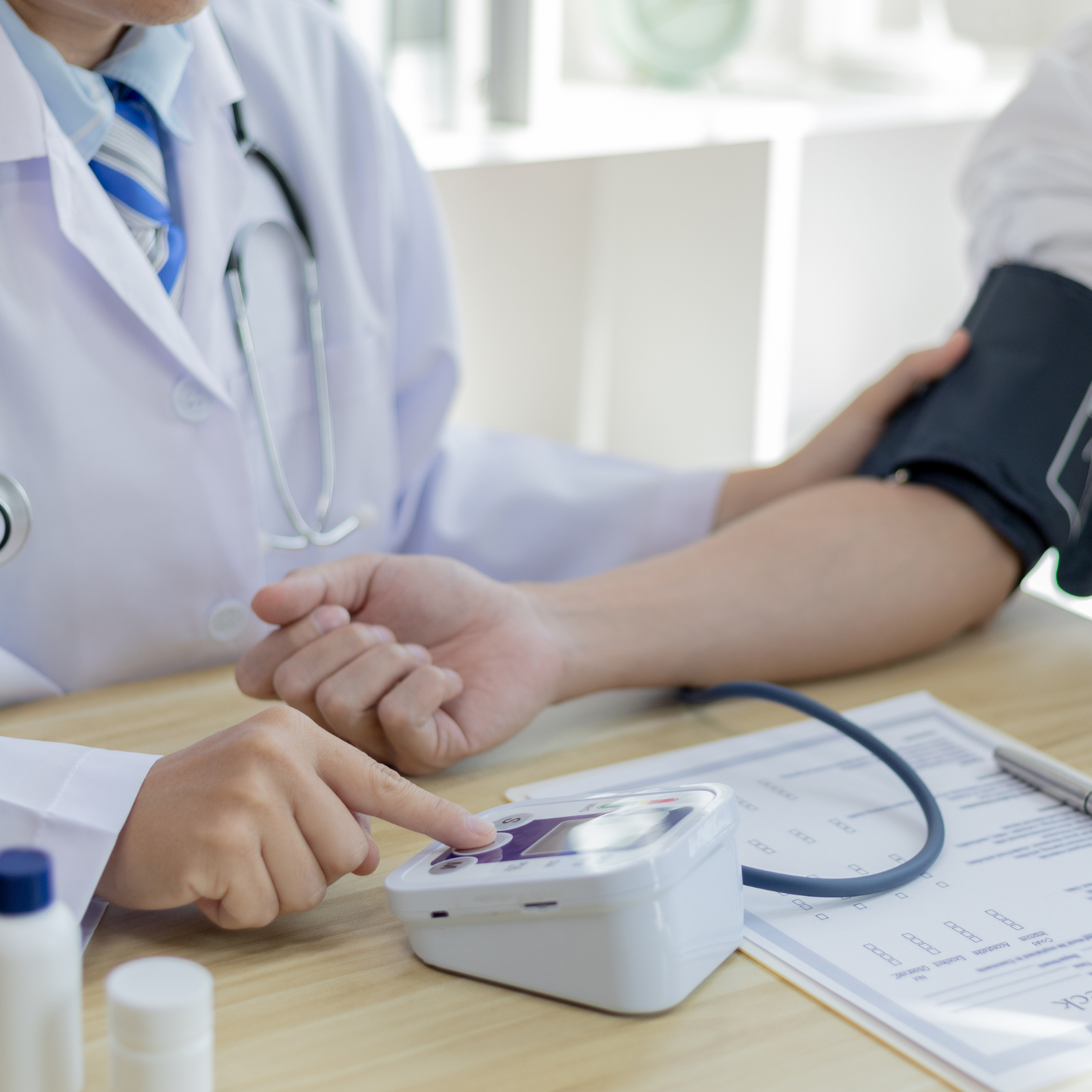Hypertension
content of this page
1- Introduction
2- Causes
3– Pathophysiology
4- Signs & Symptoms
5- Investigations & Lab Results
6- Complications
7- Treatment
Introduction
Hypertension is a condition characterized by persistently elevated blood pressure, typically defined as systolic pressure ≥140 mmHg or diastolic pressure ≥90 mmHg. It is a major risk factor for cardiovascular diseases, stroke, kidney damage, and other complications. In pregnancy, hypertension can be classified as chronic hypertension, gestational hypertension, preeclampsia, or eclampsia, each with specific diagnostic criteria and management protocols. Early detection and appropriate management are essential to reduce both maternal and fetal morbidity and mortality.

Causes
1. Primary (Essential) Hypertension:
Most common type
No identifiable cause
Linked to genetics, aging, and lifestyle factors
2. Secondary Hypertension:
Due to identifiable underlying conditions such as:
Renal diseases: Chronic kidney disease, renal artery stenosis
Endocrine disorders: Hyperaldosteronism, Cushing’s syndrome, pheochromocytoma, thyroid disorders
Medications: NSAIDs, oral contraceptives, corticosteroids, decongestants
Obstructive sleep apnea
Pregnancy-related: Gestational hypertension, preeclampsia
Coarctation of the aorta (in younger patients)
Pathophysiology
Hypertension develops due to a combination of increased systemic vascular resistance and, in some cases, elevated cardiac output. This process is influenced by genetic factors, sympathetic nervous system overactivity, and dysregulation of the renin-angiotensin-aldosterone system (RAAS). When RAAS is activated, angiotensin II causes vasoconstriction while aldosterone promotes sodium and water retention, both contributing to elevated blood pressure. Additionally, endothelial dysfunction reduces the production of vasodilators like nitric oxide and increases vasoconstrictors such as endothelin, further raising vascular tone. Over time, these changes lead to vascular remodeling and damage to target organs including the heart, kidneys, brain, and eyes. In pregnancy, gestational hypertension is associated with abnormal placental development and widespread endothelial dysfunction, leading to increased vascular resistance and hypertension without prior chronic elevation in blood pressure.

Signs & Symptoms
Headache (often occipital and worse in the morning)
Dizziness or lightheadedness
Blurred vision or visual disturbances
Palpitations
Fatigue
Nausea or vomiting (in severe or malignant hypertension)
Chest pain (may indicate hypertensive heart disease or cardiac ischemia)
Shortness of breath
Epistaxis (nosebleeds)
Swelling in pregnancy (may raise concern for preeclampsia)
Signs on physical examination may include:
Elevated blood pressure on repeated measurements
Retinal changes (e.g., AV nicking, hemorrhages, papilledema in severe cases)
Displaced apex beat (suggestive of left ventricular hypertrophy)
Abdominal bruit (in renovascular hypertension)
Investigations & Lab Results
1. Blood Pressure Measurement:
Multiple readings on separate occasions using a properly calibrated sphygmomanometer
Ambulatory or home BP monitoring may be used for confirmation
2. Urinalysis:
Check for proteinuria or hematuria (suggests kidney involvement)
Especially important in pregnancy
3. Blood Tests:
Serum electrolytes (Na⁺, K⁺): To detect imbalances, particularly in secondary causes or due to medications
Renal function tests (BUN, creatinine): To assess for chronic kidney disease
Fasting blood glucose and HbA1c: To assess for diabetes mellitus
Lipid profile: To evaluate cardiovascular risk
Thyroid function tests: If secondary cause is suspected
4. ECG (Electrocardiogram):
May show signs of left ventricular hypertrophy or strain
5. Echocardiography:
To assess cardiac structure and function if heart disease is suspected
6. Fundoscopy:
May reveal hypertensive retinopathy (AV nicking, hemorrhages, cotton wool spots)
Complications
1. Cardiovascular Complications:
Left ventricular hypertrophy (LVH)
Heart failure (especially diastolic)
Coronary artery disease (CAD)
Myocardial infarction (MI)
Aortic dissection
Peripheral artery disease (PAD)
2. Cerebrovascular Complications:
Stroke (ischemic or hemorrhagic)
Transient ischemic attacks (TIA)
Vascular dementia
3. Renal Complications:
Chronic kidney disease (CKD)
Hypertensive nephrosclerosis
End-stage renal disease (ESRD)
4. Ocular Complications:
Hypertensive retinopathy
Retinal hemorrhages
Papilledema (in malignant hypertension)
Vision loss
5. Vascular Damage:
Atherosclerosis
Arterial stiffening
6. In Pregnancy:
Placental abruption
Preterm delivery
Intrauterine growth restriction (IUGR)
Preeclampsia and eclampsia
Maternal and fetal morbidity/mortality
Treatment
1. Lifestyle Modifications (for all patients):
Dietary changes: DASH diet (low sodium, high potassium, fruits, vegetables)
Salt restriction: <2.3 g/day of sodium
Weight loss: Maintain BMI <25
Regular physical activity: At least 30 minutes most days
Limit alcohol intake
Smoking cessation
Stress management
2. Pharmacologic Treatment (Non-pregnant Adults):
First-line drugs:
– ACE inhibitors (e.g., enalapril)
– ARBs (e.g., losartan)
– Calcium channel blockers (e.g., amlodipine)
– Thiazide diuretics (e.g., hydrochlorothiazide)Other options (based on comorbidities):
– Beta-blockers (e.g., atenolol) – used selectively
– Loop diuretics – in renal impairment
– Aldosterone antagonists – in resistant hypertension
3. Hypertension in Pregnancy:
Safe antihypertensives include:
– Methyldopa
– Labetalol
– Nifedipine (extended-release)
– Hydralazine (IV for hypertensive emergencies)Contraindicated in pregnancy:
– ACE inhibitors
– ARBs
– Direct renin inhibitors (e.g., aliskiren)
These drugs can cause fetal renal damage, oligohydramnios, and fetal death.